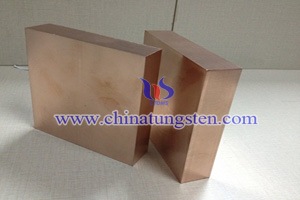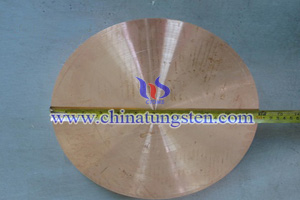Tungsten Copper FGM Principle
Tungsten copper FGM principle makes the interface of the composition and organization have a constant change by controlling micro elements. Its characteristics include: 1. The composition and structure of the material show a continuous gradient; 2. There is no obvious interface within the material; 3. The properties of the material also show a continuous gradient change. The thermal stress relaxation function gradient material is formed with the ceramic material, the ceramic material with good heat resistance is used for the high temperature side wall, and the metal material with good thermal conductivity and strength is used for the low temperature side wall. Materials from the transition to the metal in the process of ceramics, heat resistance gradually decreased, the mechanical strength gradually increased. The thermal stress is small at both ends of the material and reaches the peak in the middle transition zone so that it has the function of alleviating thermal stress. There is a comparison between gradient materials and composite materials:
Material |
Composite Material |
Gradient Material |
Design |
Combine advantages of two and more materials (W-Cu) |
Special feature (tungsten copper FGM) |
Combination |
Chemical bond / physical bond |
Intermolecular force / chemical bond / physical bond |
Micro-structure |
Heterogeneous interface |
Heterogeneous interface |
Macro-structure |
Homogeneous |
Heterogeneous interface(constant change) |
Function |
Unified, consistent |
Gradient |
By comparison, it can be found that the non - gradient component will lead to stress concentration, the gradual transition of components, the stress concentration is greatly reduced, the gradient stress concentration is only 1/3 ~ 1/4 of non - gradient structure. In addition, non-gradient samples were susceptible to cracking when cooled, and the gradient structure samples exhibited bonding strength of nearly 400 MPa. Compared with abrupt interface, gradient materials can introduce a continuous or stepwise gradient in the composition to increase the interfacial bonding strength of different solid (such as metals and ceramics), suppress stress concentration, delay the plastic yielding and failure. Thermal protection gradient function material is the use of its composition and structure of the continuous changes to avoid thermal stress concentration caused by the interface of the shedding and cracking in case of material failure.


Any feedback or inquiry of Tungsten Copper Alloy Products please feel free to contact us:
Email: sales@chinatungsten.com
Tel.: +86 592 512 9696 ; +86 592 512 9595
